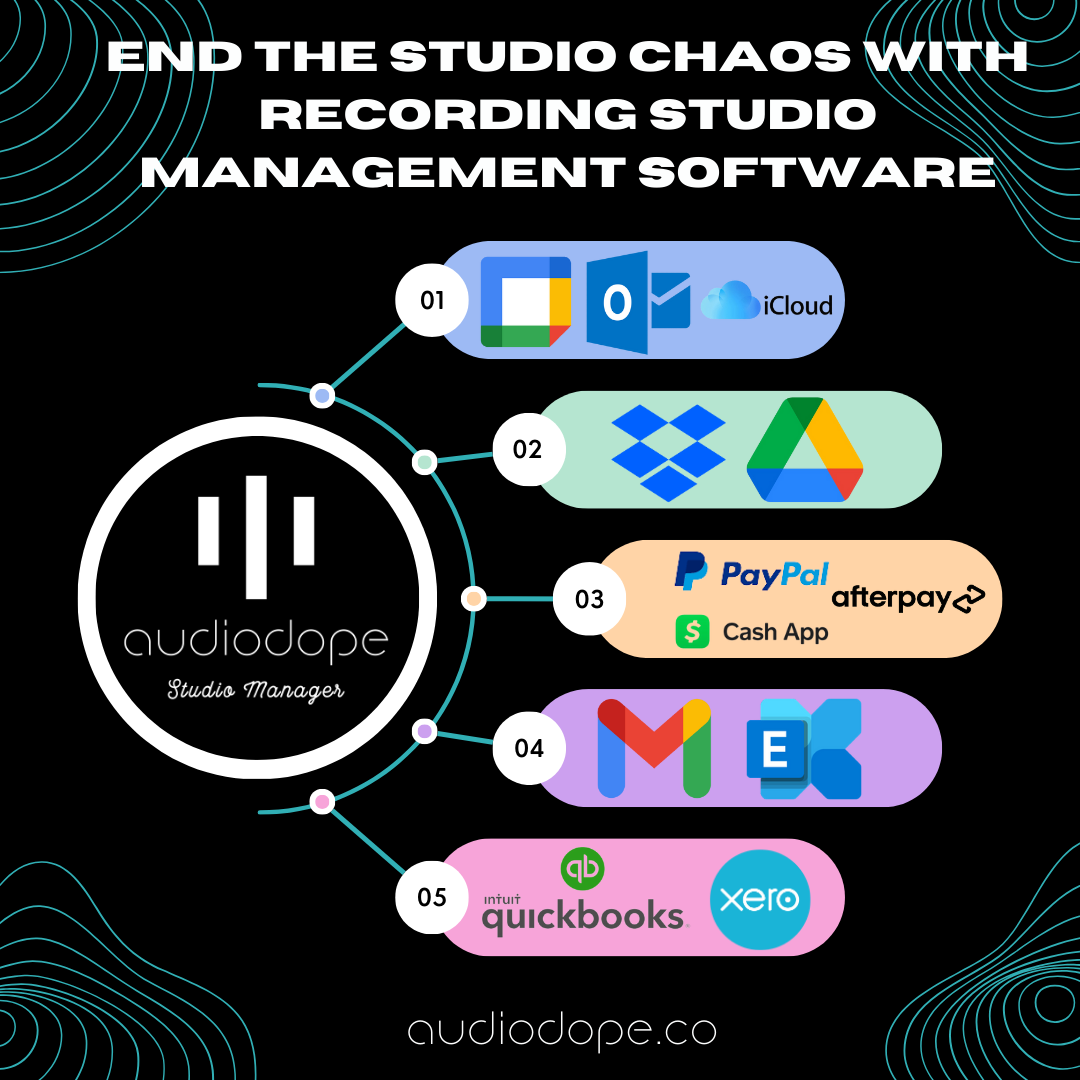How Much Does It Really Cost to Start a Recording Studio?
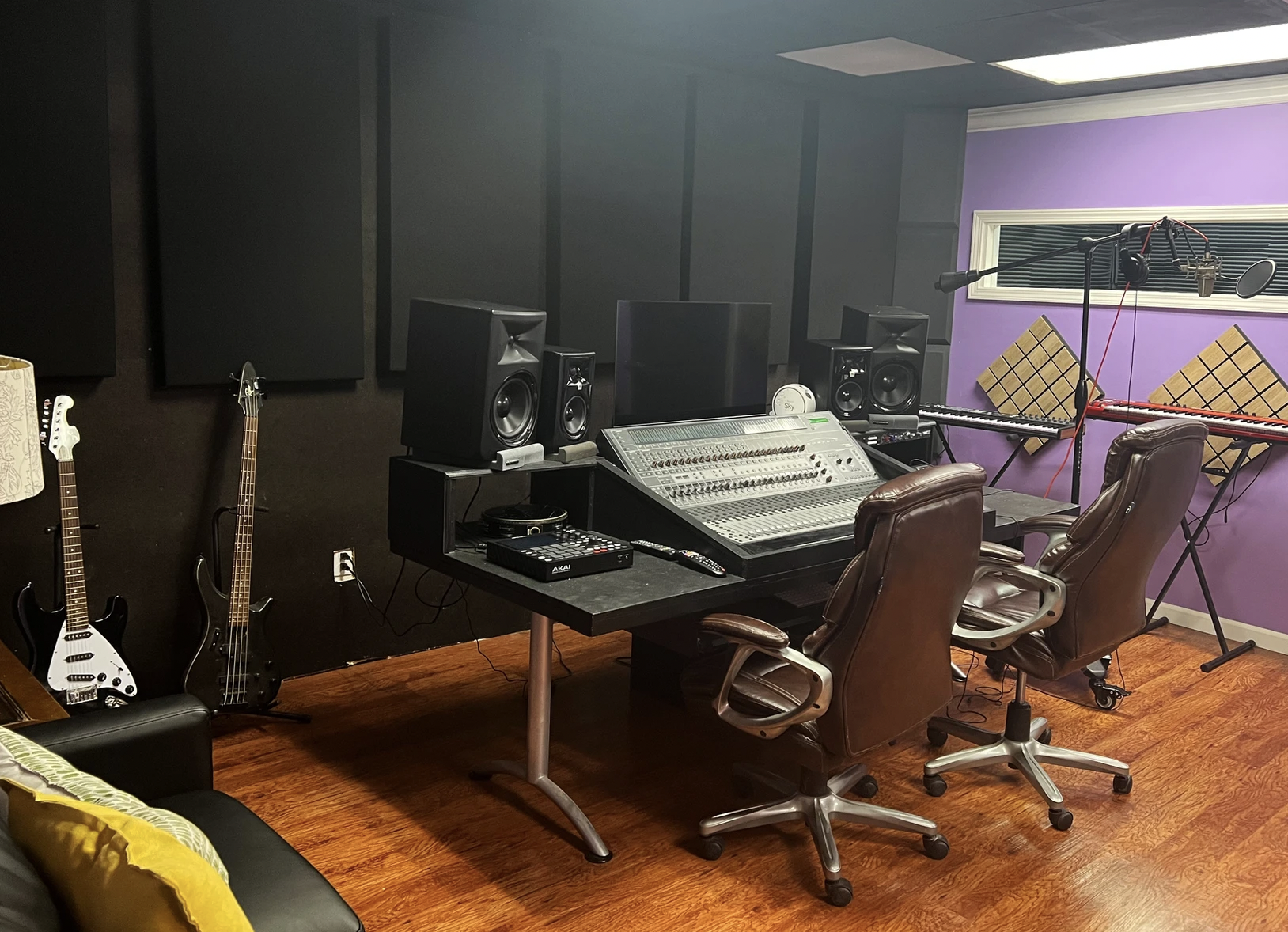
As a music enthusiast and aspiring entrepreneur, you might of always dreamed of owning your own recording studio. The allure of creating a space where artists can bring their musical visions to life is undeniably exciting. However, turning this dream into reality requires more than just passion—it demands a thorough understanding of the costs involved.
In this comprehensive guide, we will take you through the intricate details of launching a recording studio, from the initial investment to ongoing expenses. We'll explore every aspect of the process, helping you gain a realistic perspective on what it takes to build and maintain a successful studio.
Whether you're a seasoned producer looking to expand your operations or a newcomer to the industry, this article will provide valuable insights into the financial aspects of running a recording studio. So, let's dive in and uncover the true cost of bringing your studio dreams to fruition.
Understanding the Components of a Recording Studio
Before we delve into the specifics of costs, it's crucial to understand the essential components that make up a professional recording studio. These elements work together to create an environment conducive to capturing high-quality audio and producing polished recordings.
- Control Room: This is the heart of your studio, where you'll monitor and mix recordings. It typically houses:
- Mixing console
- Studio monitors
- Computer workstation
- Outboard gear (compressors, equalizers, etc.)
- Live Room: This is where the actual recording takes place. It should be acoustically treated and large enough to accommodate various instruments and performers.
- Isolation Booth: A smaller, soundproofed room for recording vocals or instruments that require separation from other sounds.
- Acoustic Treatment: Materials and designs that optimize the sound quality within each room.
- Microphones and Preamps: A selection of high-quality microphones and preamps to capture different sound sources.
- Cables and Accessories: The often-overlooked but essential connectors that tie everything together.
Understanding these components will help us break down the costs more effectively in the following sections. Keep in mind that the quality and quantity of each element can significantly impact your overall budget.
Initial Investment: Equipment and Technology Costs
When it comes to launching a recording studio, the initial investment in equipment and technology often represents the largest portion of your startup costs.
Let's break down the essential equipment categories and their approximate costs:
- Recording Equipment:
- Professional-grade microphones: $5,000 - $20,000
- Preamps and audio interfaces: $2,000 - $10,000
- Studio monitors: $2,000 - $10,000
- Headphones: $500 - $2,000
- Computer and Software:
- High-performance computer: $2,000 - $5,000
- Digital Audio Workstation (DAW) software: $500 - $2,500
- Plug-ins and virtual instruments: $1,000 - $5,000
- Mixing Console:
- Analog or digital mixing board: $5,000 - $50,000+
- Outboard Gear:
- Compressors, EQs, and effects processors: $3,000 - $20,000
- Instruments:
- Studio piano or keyboard: $2,000 - $15,000
- Guitar and bass: $1,000 - $5,000
- Drum kit: $2,000 - $10,000
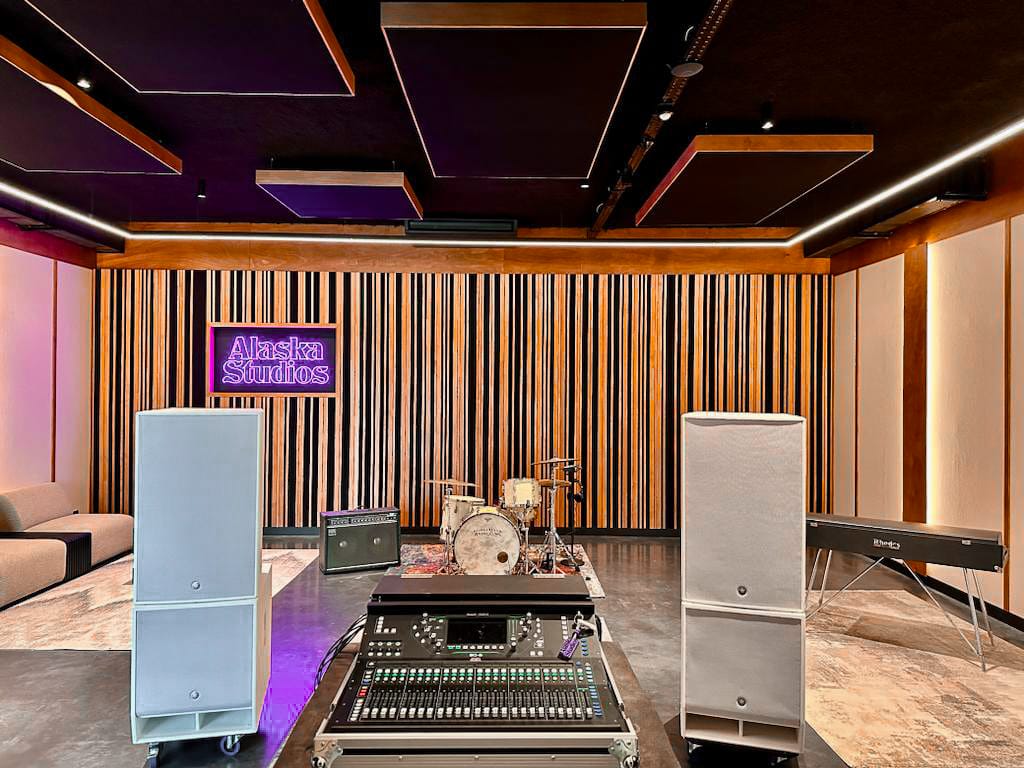
It's important to note that these ranges can vary significantly based on the quality and brand of equipment you choose.
As a rule of thumb, we recommend budgeting between $50,000 to $150,000 for a professional-grade studio setup. However, it's possible to start with a more modest setup and upgrade over time as your business grows.
Space Considerations: Renting vs. Building
One of the most critical decisions we face when launching a recording studio is whether to rent an existing space or build a custom facility. Both options have their pros and cons, and the choice largely depends on your budget, location, and long-term goals.
Renting a Space
Pros:
- Lower upfront costs
- Flexibility to relocate if needed
- Less responsibility for building maintenance
Cons:
- Limited control over acoustics and layout
- Potential restrictions on modifications
- Ongoing rental expenses
When renting, expect to pay anywhere from $1,000 to $5,000 per month for a suitable commercial space, depending on your location and the size of the studio.
Building a Custom Studio
Pros:
- Complete control over design and acoustics
- Potential for long-term cost savings
- Ability to create a unique brand identity
Cons:
- High upfront costs
- Time-consuming process
- Responsibility for all maintenance and repairs
Building a custom studio can cost anywhere from $100,000 to $500,000 or more, depending on the size and complexity of the design.
In my experience, many studio owners start by renting a space and gradually work towards owning their own facility. This approach allows you to build your client base and refine your business model before making a significant real estate investment.
Whichever route you choose, be sure to factor in additional costs such as:
- Soundproofing and acoustic treatment
- Electrical and HVAC upgrades
- Permits and inspections
- Furniture and decor
Remember, the space you choose will significantly impact your studio's sound quality and overall vibe, so it's worth investing time and resources to get it right.
Acoustic Treatment: Creating the Perfect Sound Environment
Creating an acoustically optimized environment is crucial for producing high-quality recordings. As someone who's learned this lesson the hard way, I can't stress enough how important proper acoustic treatment is to the success of your studio.
Acoustic treatment involves managing sound reflections, absorbing unwanted frequencies, and diffusing sound waves to create a balanced and accurate listening environment. Here's a breakdown of the key elements and their associated costs:
- Bass Traps: These absorb low-frequency sound waves and are essential for controlling bass buildup in corners.
- Cost: $500 - $2,000 per room
- Acoustic Panels: These absorb mid to high-frequency reflections and help reduce echo.
- Cost: $1,000 - $5,000 per room
- Diffusers: These scatter sound waves to create a more natural ambiance.
- Cost: $1,000 - $3,000 per room
- Soundproofing: This involves isolating your studio from external noise and preventing sound leakage.
- Cost: $5,000 - $20,000+ (depending on the level of isolation required)
- Floating Floors: These help isolate low-frequency vibrations.
- Cost: $2,000 - $10,000 per room
- Custom Designs: For optimal results, you may want to hire an acoustic consultant.
- Cost: $2,000 - $10,000 for design and consultation
While it's possible to DIY some aspects of acoustic treatment, we highly recommend working with professionals for at least the initial design and key installations. The investment in proper acoustic treatment will pay dividends in the quality of your recordings and the satisfaction of your clients.
Keep in mind that acoustic treatment is an ongoing process. As you use your studio, you'll likely identify areas that need fine-tuning. Budget for periodic adjustments and upgrades to maintain optimal sound quality.
Software and Digital Tools: Essential Recording Programs
In today's digital age, software and digital tools play a crucial role in the recording process. As someone who's witnessed the evolution of recording technology, I can attest to the power and versatility that modern software brings to the studio.
Here's a list of essential software categories and their estimated costs:
- Digital Audio Workstation (DAW):
- Pro Tools: $599 (perpetual license) or $299/year (subscription)
- Logic Pro X: $199.99 (one-time purchase)
- Ableton Live: $449 - $749 (depending on the version)
- Virtual Instruments:
- Native Instruments Komplete: $599 - $1,199
- Spectrasonics Omnisphere: $479
- Arturia V Collection: $499
- Mixing and Mastering Plugins:
- iZotope Music Production Suite: $999
- Waves Gold Bundle: $799
- FabFilter Total Bundle: $999
- Audio Restoration Software:
- iZotope RX: $399 - $1,199
- Steinberg SpectraLayers: $399
- Notation Software:
- Sibelius: $239/year (subscription)
- Finale: $600 (perpetual license)
- Project Management and Business Operations:
- AudioDope Studio Manager: $25 - $99/month
- Accounting Software: $15 or more/month (Quickbooks/Xero/Wave/Freshbooks)
- Company Email Account: $15 or more/month (Gmail/Outlook/Yahoo)
When budgeting for software, consider the following:
- Many companies offer educational discounts if you qualify.
- Some software is available on a subscription basis, which can lower initial costs but may be more expensive long-term.
- Factor in the cost of regular updates and support plans.
We recommend budgeting between $5,000 to $10,000 for a comprehensive software suite. However, you can start with a more basic setup and expand as your needs grow and budget allows.
Remember, while having the latest software is important, it's equally crucial to invest time in learning how to use these tools effectively. Consider allocating funds for online courses or workshops to maximize your software investments.
Hidden Costs: Licenses, Insurance, and Utilities
When launching a recording studio, it's easy to focus on the exciting aspects like equipment and acoustics. There are several hidden costs that can catch you off guard if you're not prepared.
Let's explore these often-overlooked expenses:
Licenses and Permits
- Business License: $50 - $500 annually, depending on your location
- Music Licensing:
- ASCAP: $50 - $150 annually
- BMI: $150 - $500 annually
- Building Permits: $500 - $2,000 (if renovations are needed)
Insurance
- General Liability Insurance: $500 - $2,000 annually
- Professional Liability Insurance: $1,000 - $3,000 annually
- Equipment Insurance: 1-2% of the total value of your equipment annually
Utilities
- Electricity: $200 - $500 monthly (studios consume a lot of power!)
- Internet: $100 - $300 monthly for high-speed, reliable service
- Water and Heating/Cooling: $100 - $300 monthly
Other Hidden Costs
- Software Subscriptions: $100 - $500 monthly
- Equipment Maintenance: 5-10% of equipment value annually
- Website Hosting and Maintenance: $20 - $100 monthly
- Cleaning Services: $200 - $500 monthly
- Office Supplies: $100 - $300 monthly
It's crucial to factor these ongoing expenses into your business plan. I recommend setting aside a contingency fund of at least 10-15% of your total budget to cover unexpected costs and fluctuations in these expenses.
Remember, while these costs may seem daunting, they're essential for running a professional and legally compliant studio. Properly accounting for these expenses will help you set realistic rates and ensure the long-term sustainability of your business.
Staffing Your Studio: Hiring Engineers and Producers
As your recording studio grows, you'll likely need to bring on additional staff to handle the workload and offer a wider range of services. Hiring the right team is crucial for maintaining quality and building a positive reputation. Here's what you need to consider when staffing your studio:
Types of Roles to Consider:
- Audio Engineers: Responsible for recording, mixing, and sometimes mastering.
- Producers: Help artists develop their sound and oversee the recording process.
- Studio Manager: Handles bookings, client relations, and day-to-day operations.
- Maintenance Technician: Keeps equipment in top condition and troubleshoots issues.
Salary Ranges:
- Junior Audio Engineer: $30,000 - $50,000 per year
- Senior Audio Engineer: $50,000 - $100,000+ per year
- Producer: $50,000 - $150,000+ per year (often project-based)
- Studio Manager: $40,000 - $70,000 per year
- Maintenance Technician: $40,000 - $60,000 per year (part-time or contract)
Additional Staffing Costs:
- Benefits: Factor in an additional 20-30% of salaries for benefits like health insurance and retirement plans.
- Training: Budget $1,000 - $5,000 per employee annually for ongoing education and skill development.
- Recruiting: Expect to spend $2,000 - $10,000 per hire on job postings, interviews, and onboarding.
Staffing Strategies:
- Start Lean: Begin with a core team and expand as your business grows.
- Freelancers and Contractors: Utilize freelancers for specialized skills or during busy periods.
- Internships: Partner with local music schools to offer internships, which can be a great way to identify talent.
- Profit-Sharing: Consider offering profit-sharing or performance-based bonuses to align staff interests with the studio's success.
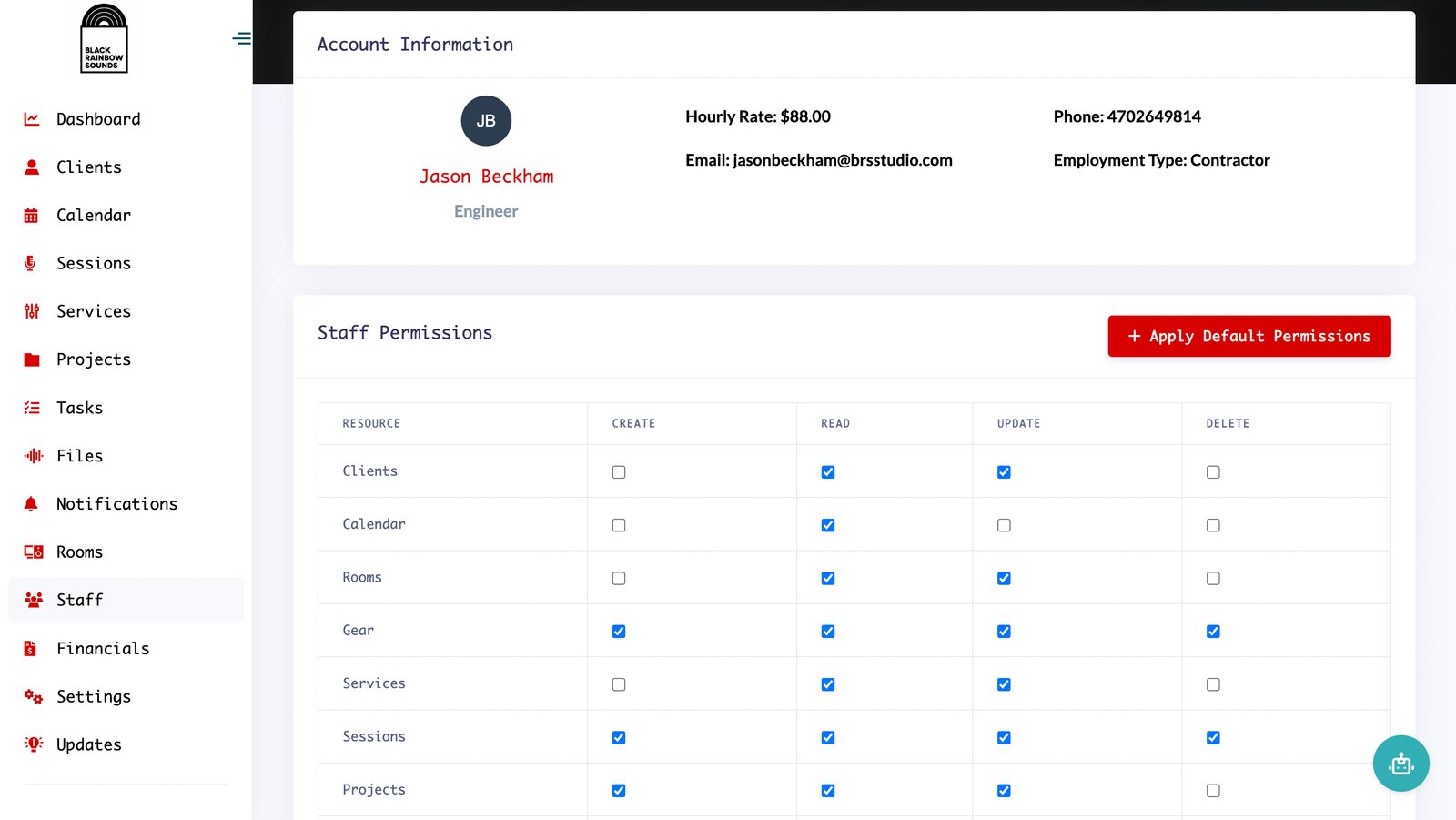
Building a talented and reliable team is one of the most challenging aspects of running a studio. It's worth investing time and resources to find the right people who share your vision and work ethic.
Remember, your staff is the face of your studio to many clients. Their skills, attitude, and professionalism will directly impact your studio's reputation and success. Choose wisely and invest in their growth and satisfaction.
Marketing and Promotion: Getting Your Studio Known
In the competitive world of recording studios, effective marketing and promotion are essential for attracting clients and building your brand. Here's a breakdown of key marketing channels and their associated costs:
Digital Marketing
- Website Development and Maintenance:
- Initial design and development: $500 - $10,000
- Ongoing maintenance and updates: $100 - $500 monthly
- Search Engine Optimization (SEO):
- Professional SEO services: $500 - $2,000 monthly
- Social Media Marketing:
- Content creation and management: $100 - $1,000 monthly
- Paid social media advertising: $100 - $2,000 monthly
- Email Marketing:
- Email marketing platform: $20 - $200 monthly
- Content creation: $200 - $1,000 monthly
Traditional Marketing
- Print Materials:
- Business cards, brochures, flyers: $500 - $2,000 annually
- Local Advertising:
- Radio spots or local magazine ads: $1,000 - $5,000 annually
- Industry Events and Networking:
- Attendance at music conferences and trade shows: $1,000 - $10,000 annually
Content Marketing
- Blog and Podcast Production:
- Content creation: $100 - $2,000 monthly
- Equipment for podcasting: $500 - $2,000 (one-time cost)
- Video Production:
- Equipment: $2,000 - $10,000 (one-time cost)
- Editing and production: $500 - $2,000 per video
Public Relations
- Press Releases and Media Outreach:
- PR agency services: $2,000 - $5,000 monthly
Marketing Strategies to Consider:
- Showcase Your Work: Create a portfolio of your best recordings and share them on your website and social media.
- Collaborate with Local Artists: Offer special rates to up-and-coming artists in exchange for promotion.
- Host Events: Organize open houses or workshops to attract potential clients and build community.
- Referral Program: Implement a referral program to incentivize clients to bring in new business.
- Partnerships: Collaborate with music schools, instrument shops, and other industry-related businesses for cross-promotion.
Remember, marketing is an ongoing process. we recommend allocating 5-10% of your annual revenue to marketing efforts. Start with the channels that align best with your target audience and expand your efforts as your budget allows.
Effective marketing not only brings in new clients but also helps establish your studio's brand and reputation in the industry. Invest wisely in your marketing efforts, and you'll see returns in both increased bookings and higher-profile projects.
Ongoing Expenses: Maintenance and Upgrades
Running a recording studio is not just about the initial setup; it's an ongoing commitment that requires regular maintenance and periodic upgrades.
Here's a breakdown of the key areas you need to consider:
Equipment Maintenance
- Regular Servicing:
- Professional equipment check-ups: $500 - $2,000 annually
- Cleaning and calibration: $200 - $500 quarterly
- Repairs and Replacements:
- Budget 5-10% of your equipment's value annually for unexpected repairs
- Software Updates:
- DAW and plugin updates: $500 - $2,000 annually
Facility Maintenance
- HVAC Maintenance:
- Regular servicing: $200 - $500 quarterly
- Filter replacements: $100 - $300 quarterly
- Electrical System Check-ups:
- Professional inspection: $200 - $500 annually
- Acoustic Treatment Upkeep:
- Replacing worn panels or diffusers: $500 - $2,000 annually
Technology Upgrades
- Computer Systems:
- Plan for major upgrades every 3-5 years: $2,000 - $5,000 per system
- Audio Interfaces and Converters:
- Upgrade every 5-7 years: $2,000 - $10,000
- Microphone Collection:
- Add 1-2 new high-quality mics annually: $1,000 - $5,000
Studio Amenities
- Furniture Replacement:
- Budget $1,000 - $3,000 annually for wear and tear
- Refreshments and Comforts:
- Stock beverages, snacks, etc.: $200 - $500 monthly
Professional Development
- Training and Workshops:
- Attend industry conferences: $2,000 - $5,000 annually
- Online courses and certifications: $500 - $2,000 annually
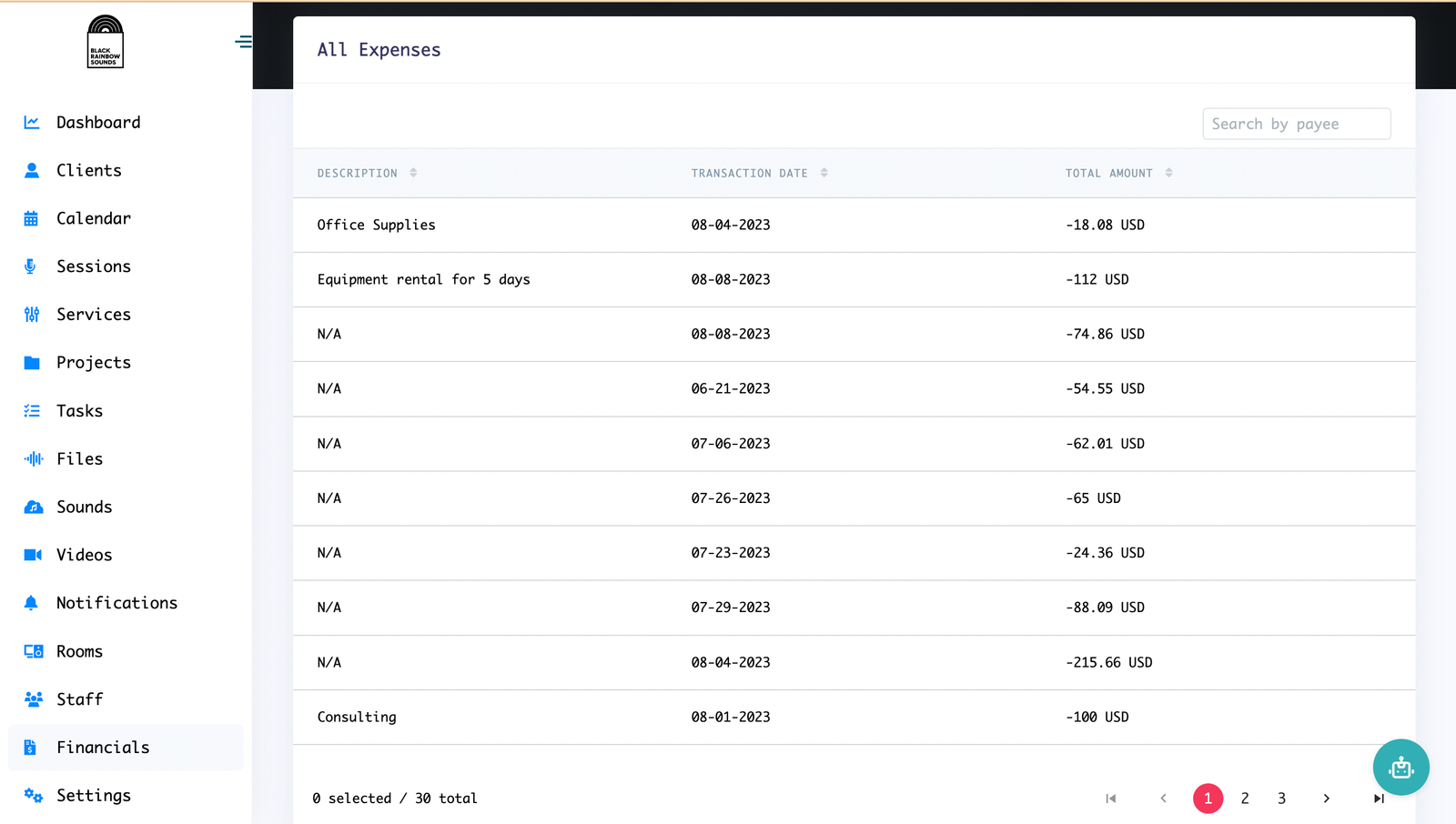
Contingency Fund
We recommend setting aside 10-15% of your annual revenue as a contingency fund for unexpected expenses or opportunities.
Remember, staying up-to-date with technology and maintaining a comfortable, well-functioning space is crucial for client satisfaction and your studio's reputation. While these ongoing expenses may seem daunting, they're essential investments in the longevity and success of your business.
Prioritize your upgrades based on client needs and industry trends. Sometimes, a strategic upgrade can open up new revenue streams or attract high-profile clients, making the investment well worth it.
Return on Investment: Pricing Your Services
Determining the right pricing strategy for your recording studio is crucial for ensuring profitability while remaining competitive in the market.
Let's break down the factors to consider and some pricing strategies:
Factors Influencing Your Pricing:
- Operational Costs: Calculate your monthly expenses, including rent, utilities, equipment maintenance, and staff salaries.
- Market Rates: Research what other studios in your area are charging for similar services.
- Expertise and Reputation: If you or your team have unique skills or a strong reputation, you can command higher rates.
- Equipment Quality: High-end gear can justify higher prices.
- Studio Amenities: Additional services or comfortable facilities can increase your value proposition.
Pricing Strategies:
- Hourly Rates:
- Entry-level: $25 - $100 per hour
- Mid-range: $100 - $250 per hour
- High-end: $250 - $500+ per hour
- Day Rates:
- Entry-level: $400 - $800 per day
- Mid-range: $800 - $2,000 per day
- High-end: $2,000 - $5,000+ per day
- Project-Based Pricing:
- Single: $500 - $2,000
- EP: $2,000 - $5,000
- Full Album: $5,000 - $20,000+
- Package Deals:
- Recording + Mixing Package: 10-20% discount on combined services
- Bulk Hour Purchases: Offer discounts for pre-purchased blocks of time
Additional Revenue Streams:
- Mastering Services: $50 - $200 per track
- Production Services: $500 - $2,000 per track
- Equipment Rentals: 10-20% of the equipment's value per day
- Online Mixing/Mastering: $100 - $500 per track
Pricing Tips:
- Start Competitive: Begin with rates slightly below market average to attract clients, then gradually increase as you build a reputation.
- Offer Tiered Pricing: Provide different service levels to cater to various budgets.
- Be Transparent: Clearly communicate what's included in your rates to avoid misunderstandings.
- Regularly Review and Adjust: Assess your pricing strategy every 6-12 months and adjust based on market conditions and your studio's performance.
- Value-Based Pricing: For high-profile clients or unique projects, consider pricing based on the value you provide rather than just time and resources.
Remember, your pricing should reflect the value you offer while ensuring your business remains profitable. Don't be afraid to charge what you're worth, but also be prepared to justify your rates with exceptional service and results.
Financing Options for Your Recording Studio
Securing financing for your recording studio can be a crucial step in turning your vision into reality.
Let's break down the most common financing options available:
1. Personal Savings
Pros:
- No debt or interest payments
- Complete control over your business
Cons:
- Limited by your personal financial situation
- Potential risk to personal finances
Tip: If using personal savings, ensure you have enough left for living expenses and emergencies.
2. Bank Loans
Pros:
- Potentially large sums available
- Build business credit
Cons:
- Strict qualification requirements
- May require collateral
Typical Terms:
- Interest rates: 3-10% APR
- Loan amounts: $25,000 - $500,000+
- Repayment periods: 1-25 years
Tip: Prepare a solid business plan and financial projections to increase your chances of approval.
3. Small Business Administration (SBA) Loans
Pros:
- Lower down payments and longer repayment terms than traditional bank loans
- Partial guarantee by the government
Cons:
- Lengthy application process
- Still require good credit and often collateral
Typical Terms:
- Interest rates: 5-8% APR
- Loan amounts: Up to $5 million
- Repayment periods: Up to 25 years
Tip: Consider working with an SBA-preferred lender to streamline the process.
4. Equipment Financing
Pros:
- Easier to qualify for than general business loans
- Equipment serves as collateral
Cons:
- Limited to equipment purchases
- May have higher interest rates than general loans
Typical Terms:
- Interest rates: 8-30% APR
- Loan amounts: Based on equipment value
- Repayment periods: 1-5 years
Tip: Compare lease options with purchase options to determine the best long-term value.
5. Crowdfunding
Pros:
- Can generate buzz and a customer base
- No repayment required for rewards-based crowdfunding
Cons:
- Success not guaranteed
- Requires significant marketing effort
Platforms:
- Kickstarter, Indiegogo, GoFundMe
Tip: Offer compelling rewards and tell a engaging story about your studio's vision.
6. Angel Investors or Venture Capital
Pros:
- Potential for large investments
- Can bring valuable industry connections and expertise
Cons:
- Give up equity and some control of your business
- High expectations for growth and return on investment
Typical Investment:
- Angel investors: $25,000 - $100,000
- Venture capital: $500,000+
Tip: Be prepared to demonstrate how your studio will generate significant returns for investors.
7. Partnerships
Pros:
- Share the financial burden and risk
- Combine skills and resources
Cons:
- Shared decision-making
- Potential for conflicts
Tip: Choose partners carefully and create a detailed partnership agreement.
8. Business Credit Cards
Pros:
- Quick access to funds
- Potential rewards or cashback
Cons:
- High interest rates if not paid in full
- Personal liability for debt
Typical Terms:
- Interest rates: 13-25% APR
- Credit limits: $1,000 - $50,000+
Tip: Look for cards with 0% APR introductory periods for large purchases.
Financing Strategy Tips:
- Mix and Match: Consider using a combination of financing options to meet your needs.
- Start Lean: Begin with essential equipment and expand as your business grows.
- Plan for the Long Term: Consider both immediate needs and future expansion when securing financing.
- Maintain Good Credit: Your personal and business credit scores will significantly impact your financing options.
- Seek Professional Advice: Consult with a financial advisor or accountant to determine the best financing strategy for your situation.
Remember, the best financing option depends on your specific circumstances, including your credit history, available collateral, and business projections. Carefully consider the terms and long-term implications of any financing you choose.
Conclusion
Launching a recording studio is an exhilarating journey that combines passion for music with entrepreneurial spirit. As we've explored in this comprehensive guide, the true cost of starting and running a studio extends far beyond the initial equipment purchases.
From acoustic treatment and software to ongoing maintenance and marketing, each aspect requires careful consideration and financial planning. Remember, success in the recording studio business doesn't happen overnight. It requires patience, persistence, and a willingness to learn and grow. While the financial investment can be significant, the rewards of running a successful studio – both creatively and financially – can be equally substantial.
